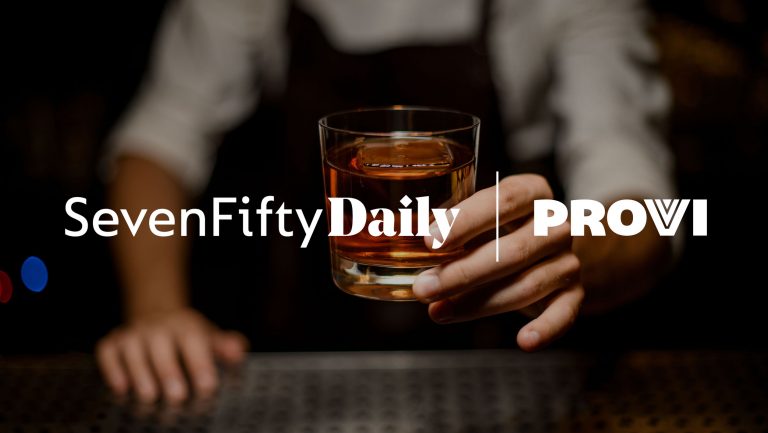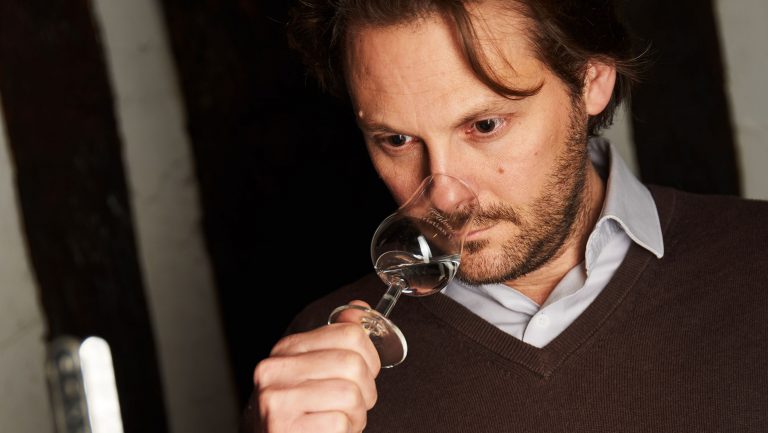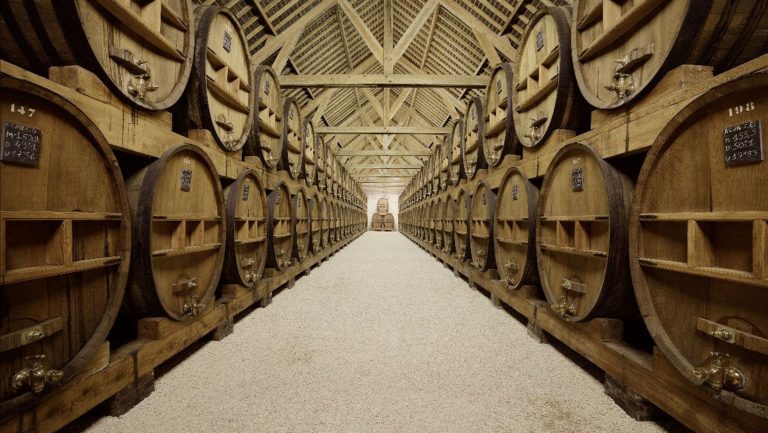In the U.S., cider is no longer enjoying the amazing growth of the past decade, but apples remain a perennial favorite among Americans. Meanwhile, the popularity of brown spirits continues unabated, expanding to embrace brandy as well. These two trends have collided to bring Calvados, France’s classic apple brandy, into more American homes and bars than ever before.
According to the Interprofession des Appellations Cidricoles (IDAC), Calvados exports to the U.S. grew 70 percent in 2021, and then repeated that feat again in 2022, making the U.S. the second largest export market for the apple brandy, after Germany. Numbers like these sometimes need to be taken with a grain of salt coming out of the topsy-turvy years of the pandemic and the global shipping crisis.
Nicolas Palazzi, the owner of PM Spirits, imports three Calvados producers, Roger Groult, Eric Bordelet, and Domaine du Tertre. According to Palazzi, importers are overstocked after bringing in extra product to protect themselves against shipping challenges, and he expects import volumes to level out.

Don’t miss the latest drinks industry news and insights. Sign up for our award-winning newsletters and get insider intel, resources, and trends delivered to your inbox every week.
But Guillaume Drouin, the third-generation owner of Calvados Christian Drouin, feels the trend has legs. “Within the brandy category, apple brandy is doing very well,” says Drouin. “U.S. cider producers have started to produce apple brandy, and there are many more American apple brandies on the shelf than even just five years ago. Calvados is the historical apple brandy of the world, so hopefully it’s taking part in that trend.”
On this point Palazzi agrees, noting that American drinkers have typically heard of the U.S. apple distillate Applejack at the very minimum. “Calvados, being the big brother of Applejack, being more complex by design, and being from a region where the name signifies something in terms of history, means it’s not as hard to sell when you already have that frame of reference.”
Indeed, the data suggests that this confluence of trends is driving a new wave of interest in Calvados among U.S. consumers and professionals alike.
From the Orchard to the Bottle
Normandy’s Calvados is one of the three classic brandies of France, alongside Cognac and Armagnac; it’s also the only one not made from grapes. The region’s history of producing apple- and pear-based spirits extends back at least five centuries, and the name Calvados came into use after the French Revolution. Production methods were formalized by the end of the nineteenth century, around the same time that Calvados rose in popularity across France, while its grape-based competitors struggled with the effects of phylloxera.
To make Calvados, apples are harvested and vinified as cider without any additions of gas, acid, or sugar, and the cider is then distilled and aged in wooden casks. A mix of apple types are permitted, but at least 70 percent must be bitter or bittersweet apples, and the rest classified as sharp or sweet; all are apple varieties that would otherwise be inedible to human palates.

The traditional Calvados orchard is planted with tall, high-stem trees, with fewer than 300 trees per hectare. Modern orchards are more densely planted with smaller, low-stem trees that are easy to manage and higher yielding, but are more work intensive. High-stem vineyards allow for cow pasturing and other uses among the trees. Many leading producers favor high-stem vineyards, and some use them exclusively.
Types of Calvados
Today, Calvados is made under three different appellations spread across Normandy and dipping occasionally into neighboring departments. The largest, Calvados AOC, makes up 70 percent of production, and is typically distilled in a column still; 35 percent of the apples must come from high-stem vineyards and the spirit must be aged for a minimum of two years. The Calvados Pays d’Auge is the oldest AOC, created in 1942. It’s a smaller area, has the same aging requirements, but is more stringent regarding apple sources, 45 percent of which must come from high-stem orchards. Calvados Pays d’Auge, uniquely, must also be double distilled in a pot still. While other Calvados can have substantial amounts of pears used in their production, Pays d’Auge limits pears to 30 percent of the fruit used.
In contrast, the newer, more southerly Calvados Domfrontais AOC, created in 1997, requires a minimum of 30 percent pears; the area is dominated by high-stem pear orchards. Calvados Domfrontais is produced using a column still and must age for at least three years before bottling; despite the longer aging requirements, the column still and high pear content typically yields a fresher, lighter style of Calvados.
All the Calvados appellations are open-minded regarding labeling rules, allowing age and quality statements on products that meet the given requirements. There is enough room within the regulations for producers to offer specialty products, so Calvados is able to keep up with trends found among other brown spirits. For example, Calvados can be aged in different types of vessels, such as older barrels left over from a previous generation, and bottled separately.

High-ABV ciders are trending thanks to updated regulations on packaging and taxation—as well as shifting consumer demands
Christian Drouin has collaborated with distilleries such as Hine Cognac, Calle 23 Tequila, and Caroni Rum to use their barrels to finish Drouin Calvados bottlings. Drouin, Groult, and others have stepped outside the Calvados appellation to produce unaged apple brandies as well. Some producers have also introduced cask strength Calvados, bottled without being reduced back to 40 percent alcohol.
Small Producers, Small Environmental Impact
Compared to other French brandies, Calvados is well-suited to fit in with the craft ethos of America’s brandy scene, with a wide range of medium and small producers. “Calvados is still a very craft category,” says Drouin. “Even the bigger Calvados producers are very small compared to the Cognac or whiskey industry.” Calvados overall includes 8,000 hectares of orchards, making it just over a tenth the size of Cognac. Nonetheless, Calvados includes about three hundred producers, a greater number than in the more famous grape brandy region.
Drouin says Calvados’s green credentials also deserve to be better known. “We examined the carbon footprint of our company, and we calculated that every time we produce a bottle of Calvados, the equivalent of three kilos of CO2 is absorbed,” says Drouin. “So it’s probably the only spirit in the world which can show, without any effort, a negative carbon footprint.” According to the IDAC, Calvados orchards on average sequester 35 to 50 tons of carbon per hectare over a 25-year period, and the orchards also provide four times the habitat for bees and other pollinators than other field crops.

That footprint is tied to the small volume produced per hectare—about one quarter that of grape brandy—and the biodiversity in the orchards, with cows grazing on the grass beneath the trees. In addition, the traditional, tall-tree orchards require no spraying. Workers visit the vineyards for pruning and harvesting, but little else; it’s very minimal interference compared to grain fields or vineyards, where tractors might pass through on a weekly basis. “It’s nothing new,” says Drouin. “It’s historical. We just have a protected way of production that’s sustainable.”
Calvados and American Cocktail Culture
While the pandemic spurred more off-premise purchases of Calvados, Drouin says 70 percent of their sales go to on-premise outlets. Leanne Favre, the creative director of Leyenda and Clover Club in Brooklyn, says that as a spirits geek she enjoys Calvados neat at home, but that sales in the two bars are mostly in the form of cocktails. “It’s getting a lot more showtime in cocktails and on menus than I’ve ever seen before,” she says.
Favre adds that the wide range of styles available, from lighter, fresher examples to more aged expressions, means Calvados has a lot of different uses today, and needn’t be confined to autumnal, seasonal drinks. “It’s amazing how much range Calvados can bring to your menu when you start including it.”
More and more Calvados producers have been visiting the U.S. market and promoting their spirits, and Favre praises the Calvados industry for recent initiatives that have helped highlight the variety the category can offer. “You had forty different producers banding together; it really showed how dynamic the category can be, just like Mezcal,” she says. “It’s really worth it to try different producers and expressions.”

Dispatch
Sign up for our award-winning newsletter
Don’t miss the latest drinks industry news and insights—delivered to your inbox every week.
Jim Clarke writes about wine, beer, and spirits for trade and consumer publications, including Beverage Media, Fortune, and World of Fine Wine. He is a sommelier and the U.S. marketing manager for Wines of South Africa.


